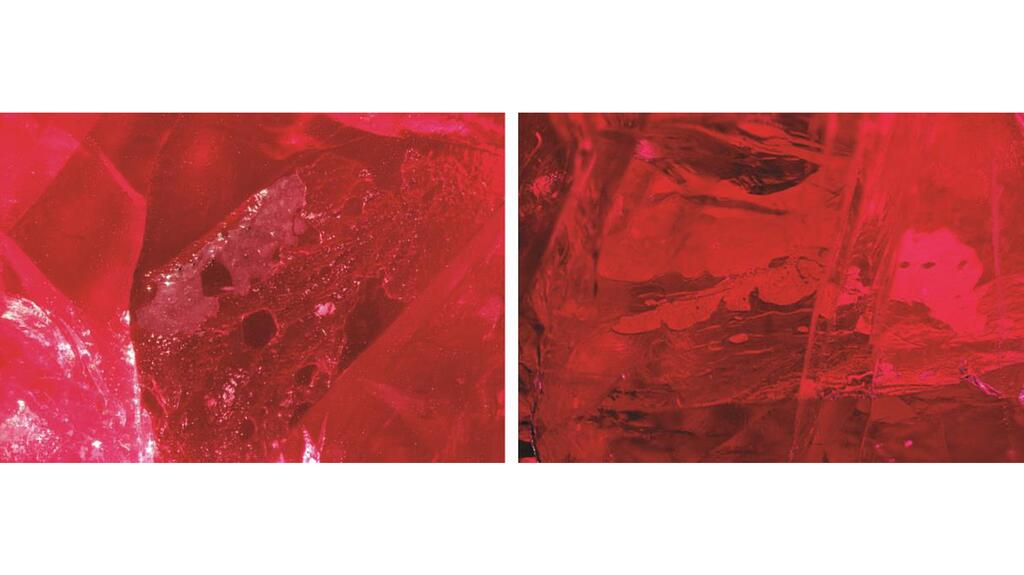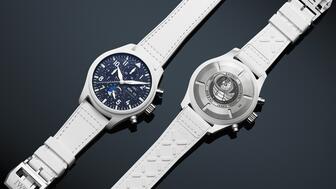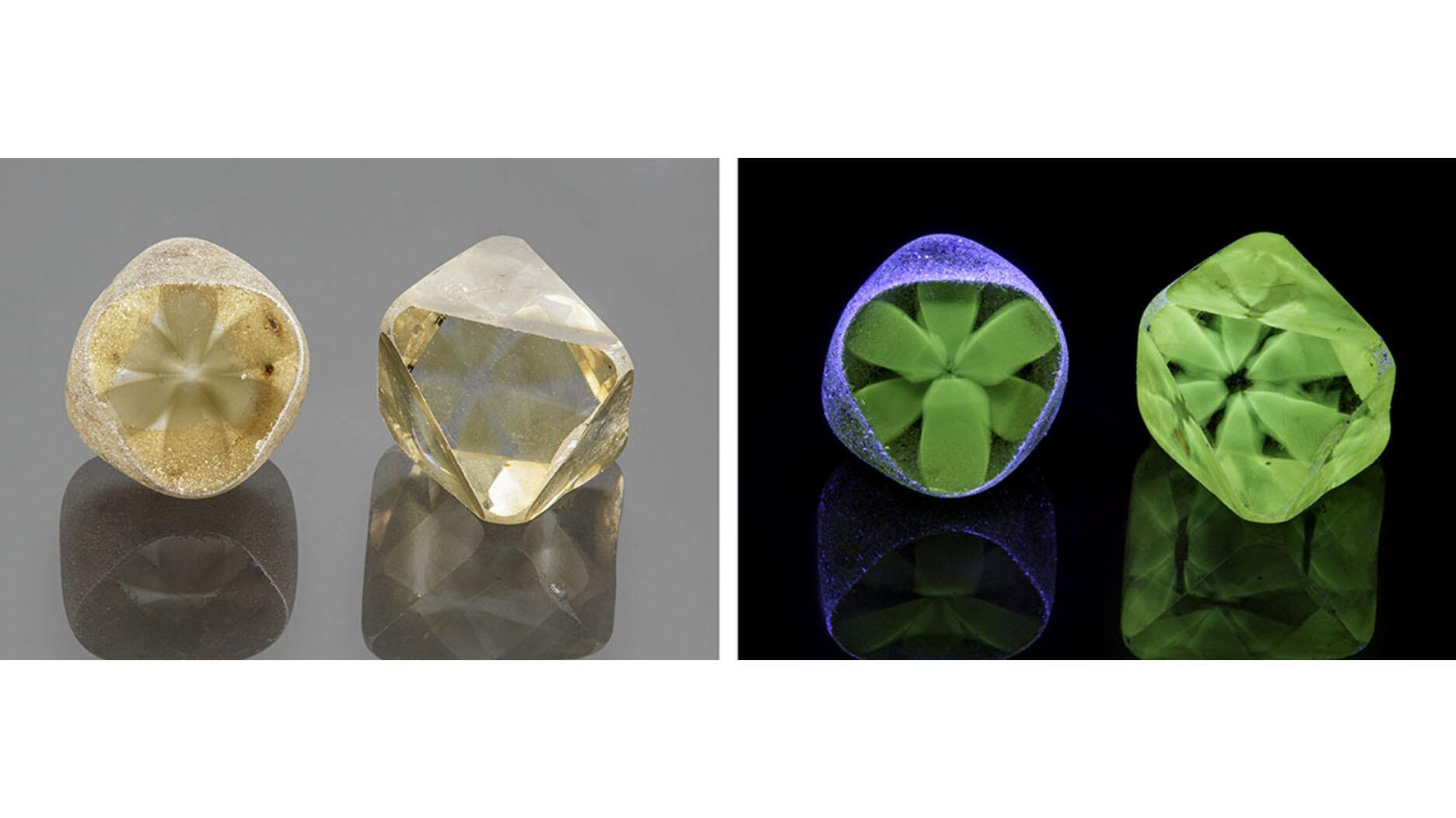GIA Examines Ruby Filled With Zinc Glass
It’s the first time the lab has encountered this type of treatment.

The research appeared in a lab note in the fall 2023 edition of GIA’s quarterly professional journal “Gems & Gemology,” authored by Shiva Sohrabi and Amy Cooper.
While lead glass filling is a common treatment for rubies, seen even in a lab-grown stone, this instance was the first time graders at the lab have encountered a zinc glass filling.
According to the lab note in Gems & Gemology, the 8.57-carat heart-shaped ruby originally was submitted to the lab for identification.
GIA performed standard gemological tests on the stone and found that it showed properties of a ruby, including a refractive index of 1.760–1.769, medium to strong red fluorescence to long-wave UV radiation, and a very weak red fluorescence to short-wave UV radiation.
A ruby spectrum was obtained with a handheld spectroscope.
However, fiber-optic lighting showed several fractures in the gemstone containing a whitish filler and air pockets.
Using reflected light, analysts further observed that the fractures had a lower luster than the ruby’s host mineral, corundum, confirming the presence of some kind of filling material, the lab note said.

While the undetermined filler had visual properties similar to those of other glass fillers in corundum, GIA said it did not show the “blue flash effect” typically observed in rubies filled with lead glass, a characteristic noted in the article “Identification and durability of lead glass-filled rubies” from the spring 2006 edition of Gems & Gemology.
To determine the nature of the filler, graders performed a basic chemical analysis via energy-dispersive X-ray fluorescence spectroscopy (EDXRF).
“If there was lead in [the stone], which is what they suspected to start with, it’s easily detectable by that method,” Shane McClure, GIA’s global director of colored stones services, explained to National Jeweler.
The test did not reveal lead or bismuth, but instead, detected chromium, iron, and zinc, which McClure said was “something of an anomaly.”
A more sophisticated analysis, laser ablation–inductively coupled plasma–mass spectrometry (LA-ICP-MS), was performed as well. This technology uses a spot from a laser to gather a tiny amount of material for analysis via mass spectrometer, a test that McClure said is more accurate and can identify more elements.
It revealed the filler seen in the stone was a silica-based glass doped with zinc.
“Zinc had not been documented, as far as we know, as an element in one of these glasses they use to fill rubies,” said McClure.
Glass filling treatment has been used to increase durability and clarity of heavily fractured rubies since the 1980s, with cavity filling noted and described as early as 1984.
While lead glass fillers are the most popular filler for rubies, bismuth and cobalt have also been used, as noted in the spring 2020 edition of Gems & Gemology.
The original filler, silica glass, while quite durable, was easily visible due to its refractive index of about 1.5, which is significantly lower than corundum, an observation cited in a Winter 1984 edition of Gems & Gemology.
On the other hand, lead glass filler, discovered in early 2004, had a higher reflective index, about 1.70, and therefore offered better clarity enhancement.
However, the lead glass was not as durable as its silica-based predecessor and was subject to damage by even the standard retipping of a prong.
McClure said compared with lead glass from the 2000s, which contained about 70 percent lead, today’s lead glass often features more of the durable silica.
The filler seen in the heart-shaped stone, a silica-based glass with zinc as the main addition, appeared to improve the stone’s durability, but not its clarity, the lab note said.
“Normally, the purpose is to improve both clarity and durability,” McClure said. “In this particular case, [the filler] wasn’t doing much to improve the clarity for whatever reason. It could’ve been poorly filled or damaged subsequently. There’s a number of reasons that might be the case.”
One thing not mentioned in the lab note is that while zinc glass might be new to the world of gemstone fillers, it isn’t an entirely new concept.
“In the lead glass that most people are used to—which we call crystal and use for glassware and have for a long time—one of the alternatives to lead is zinc,” McClure said. “They make a glass with zinc in it that raises the optical properties of the glass just like lead does.”
One of the main reasons alternatives were sought for crystal is due mostly to the widespread consumer concern around lead.
In general, though, lead glasses are not something to worry about, McClure said.
“When [lead] is in a glass, it’s caught up in the molecular structure of the glass, and so handling it doesn’t do anything. Even drinking something out of it doesn’t do anything,” he said. “It’s not dangerous in normal events. Wearing it in a piece [of jewelry] is not dangerous.
“Nonetheless, the public is afraid of these things.”
GIA adds a comment on gemstone reports when lead glass is present, noting that care needs to be taken when doing work on the stone because of potential damage.
McClure speculates that, because of the general fear around lead, sellers would rather not have the comment if it can be helped, and this could be inspiring an exploration of new metals, like zinc, in these glass fillers.
“We see fillers with less lead than we used to, and we see fillers with bismuth rather than lead, which accomplishes a similar thing—raises the reflective index of the glass, making it a better filling material for corundum,” McClure said.
“I’d venture to guess someone was just experimenting with different kinds of formulas of glass, seeing if one works better than another [without putting] lead in it. This is probably what’s happening, but treaters don’t comment on this very much, so we’re surmising what might be the case.”
The Latest

Said to be the first to write a jewelry sales manual for the industry, Zell is remembered for his zest for life.

The company outfitted the Polaris Dawn spaceflight crew with watches that will later be auctioned off to benefit St. Jude’s.

A buyer paid more than $100,000 for the gemstone known as “Little Willie,” setting a new auction record for a Scottish freshwater pearl.

Supplier Spotlight Sponsored by GIA.

Anita Gumuchian created the 18-karat yellow gold necklace using 189 carats of colored gemstones she spent the last 40 years collecting.


The giant gem came from Karowe, the same mine that yielded the 1,109-carat Lesedi La Rona and the 1,758-carat Sewelô diamond.

The three-stone ring was designed by Shahla Karimi Jewelry and represents Cuoco, her fiancé Tom Pelphrey, and their child.

Supplier Spotlight Sponsored by GIA

The Manhattan jewelry store has partnered with Xarissa B. of Jewel Boxing on a necklace capsule collection.

Acting as temporary virtual Post-it notes, Notes are designed to help strengthen mutual connections, not reach new audiences.

The jewelry historian discusses the history and cultural significance of jewelry throughout time and across the globe.

From fringe and tassels to pieces that give the illusion they are in motion, jewelry with movement is trending.

The designer and maker found community around her Philadelphia studio and creative inspiration on the sidewalks below it.

The change to accepted payment methods for Google Ads might seem like an irritation but actually is an opportunity, Emmanuel Raheb writes.

The industry consultant’s new book focuses on what she learned as an athlete recovering from a broken back.

The fair will take place on the West Coast for the first time, hosted by Altana Fine Jewelry in Oakland, California.

Hillelson is a second-generation diamantaire and CEO of Owl Financial Group.

Submissions in the categories of Jewelry Design, Media Excellence, and Retail Excellence will be accepted through this Friday, Aug. 23.


Known as “Little Willie,” it’s the largest freshwater pearl found in recent history in Scotland and is notable for its shape and color.

Clements Jewelers in Madisonville cited competition from larger retailers and online sellers as the driving factor.

The gemstone company is moving to the Ross Metal Exchange in New York City’s Diamond District.

Most of the 18th century royal jewelry taken from the Green Vault Museum in Dresden, Germany, in 2019 went back on display this week.

The Pittsburgh jeweler has opened a store in the nearby Nemacolin resort.

With a 40-carat cabochon emerald, this necklace is as powerful and elegant as a cat.

The Erlanger, Kentucky-based company was recognized for its reliability when it comes to repairs and fast turnaround times.

Unable to pay its debts, the ruby and sapphire miner is looking to restructure and become a “competitive and attractive” company.

The trend forecaster’s latest guide has intel on upcoming trends in the jewelry market.




























